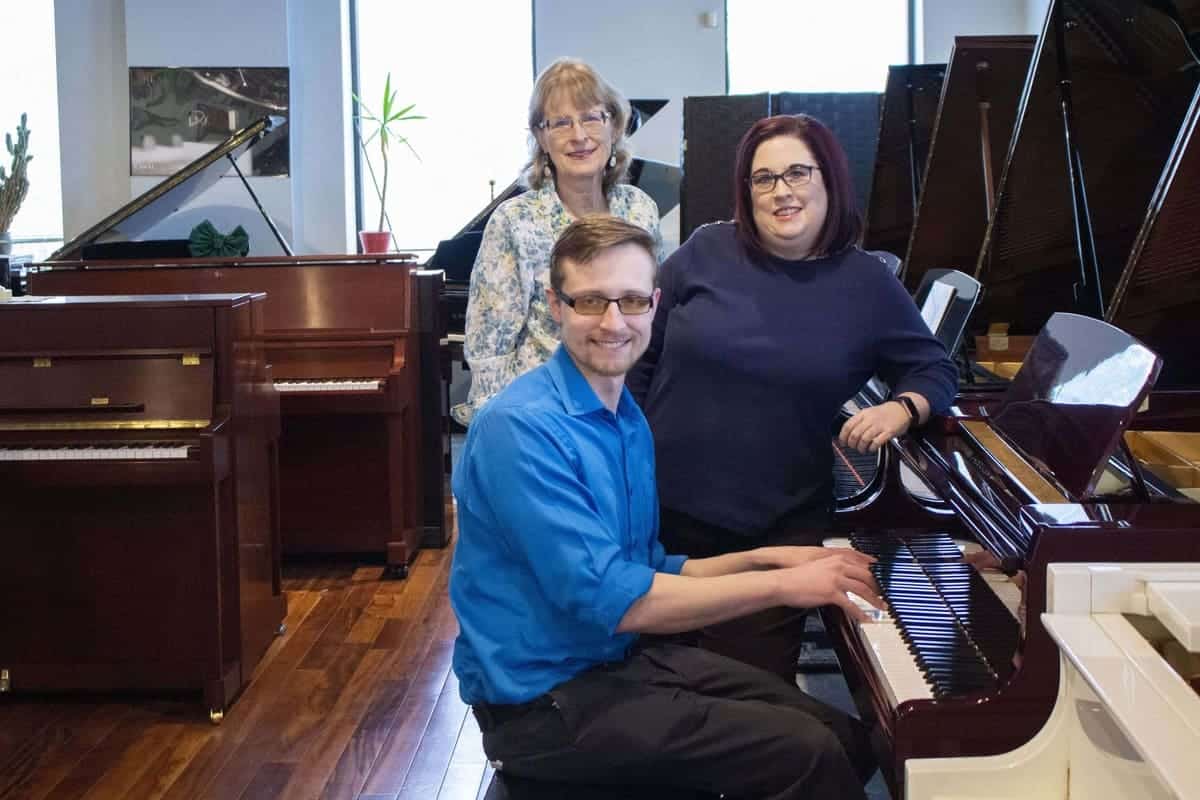No Longer Selling Pianos
Gone Out of Business
From 2006 through 2024, we were a top rated piano store in Chicagoland. We’ve since exited the industry.
No Pianos for Sale
Answers to our most frequently asked questions on buying a piano below.
FAQ About Pianos for Sale
What type of piano should I buy?
When looking at pianos for sale, there are key factors to consider:
Acoustic or Digital? Acoustic pianos offer a classic experience and can last a lifetime. Digital pianos are more affordable, portable and versatile.
Upright or Grand? Upright pianos can be great instruments and fit smaller spaces. Grand pianos are the gold standard and exude elegance.
New or Refurbished? New pianos guarantee high quality and have the best warranties. Refurbished ones balance good quality and affordability and are more eco-friendly.
Every player is unique and has different needs. Come visit us to feel and hear the difference yourself!
Read our Acoustic Piano Buyer’s Guide and Digital Piano Buyer’s Guide for more information!
Related blog post: How to Buy a Piano: 5 Tips + What to Avoid
How long does it take to learn piano?
Some people may start playing simple tunes in a few weeks. Others may take several months to reach the same level.
How long it takes to learn piano depends on things like musical background, practice routine, natural talent, and the level you want to reach.
But learning the piano is not just about reaching a destination; it’s about enjoying the process and discovering the joy of music. With patience and passion, anyone can learn to play the piano!
Read our in-depth answer: How Long Does it Take to Learn Piano?
How much is a piano?
The cost of a piano can vary widely—from about $600 to $50,000+ —depending on several factors:
Type of Piano: Acoustic pianos, including uprights and grands, generally have a broader price range than digital pianos. Uprights are usually more affordable, while grands can be more expensive. Digitals tend to be the most affordable options.
Brand and Quality: Well-known and reputable brands often come with a higher price tag, reflecting their craftsmanship and quality. Refurbished pianos can offer cost-effective options without compromising on quality.
New or Used: New pianos typically have higher prices, but they come with warranties and assurance of pristine condition. Used pianos can vary in cost based on age, condition, and brand.
Size and Features: Larger and more feature-rich pianos may have higher prices compared to compact and basic models.
Read our in-depth answer: How Much Does a Piano Cost?
Related blog post: Why Are Pianos So Expensive?
Why are there so many free pianos on Craigslist?
Limited Market Demand: If the local demand for a particular type of piano is low, there probably won’t be buyers willing to pay for them. As a result, they’ll have to be given away to gain any interest.
Cost of Moving: Disposing of pianos can be expensive. So to avoid removal costs, some people offer their pianos for free to anyone willing to take them.
Condition and Repair Costs: Pianos in need of substantial repairs or refurbishment likely can’t be sold for anything. In such cases, owners may prefer to give them away for free instead of investing in repairs.
Free Piano Scams: There are scammers taking advantage of people’s interest in a free piano. They’ll claim to have it delivered to you directly before you even see it. Read our guide on how to avoid free piano scams!
Donating to a Good Cause: Generous people may want to find their high-quality piano a new loving home. This is rarer than most people think, but it can happen!
While enticing, free pianos will require moving and may require big repairs. This could outweigh the cost of purchasing a higher-quality piano for sale from a piano dealer.
The instrument could be in unrepairable condition too. So it’s very important to have a technician evaluate its condition before you take it.
Read our in-depth answer: Don’t Get a Free Piano: Why They’re Usually the Most Expensive
How to Buy a Piano the FPC Way

Founder and head tech Alice Alviani (upper left) with vice president Linda Charboneau (right) and president Brendan Alviani (at piano).
Focus on Education
We loved teaching customers about pianos. There's lots to learn so keep asking questions and stay curious.
Play, Play, Play
It's important to play as many pianos as you can to better understand what you like—and what you don't!
Find a Trusted Technician
You'll need your piano serviced at some point. Find a reputable tech early on. It's even a great idea to have them look at any piano before you buy it.
Satisfied Families
Pianos Tuned
Years in Business
Permanenty Closed as of Jan 2025
